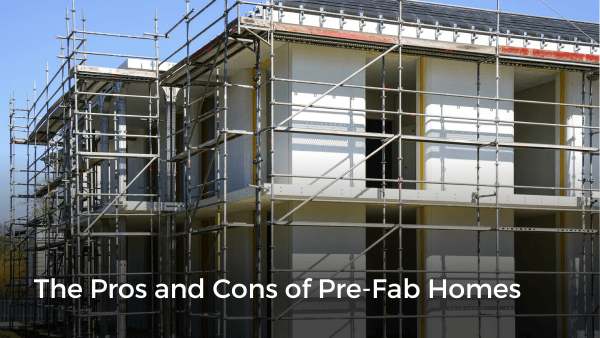In recent years, the appeal of pre-fabricated (pre-fab) homes has been on the rise. These homes, built off-site in a factory and then transported to their final location, offer an alternative to traditional home construction. For many, pre-fab homes offer an enticing solution to high construction costs, long build times, and environmental concerns. However, as with any housing option, there are both advantages and drawbacks to consider before deciding if a pre-fab home is right for you.
Pros of Pre-Fab Homes
Cost-Effective
One of the most significant advantages of pre-fabricated homes is their affordability. Because these homes are mass-produced in a factory setting, they benefit from economies of scale, which can make them significantly cheaper than traditional site-built homes. The lower cost is also due to reduced labor expenses and less material waste. For many first-time homebuyers or those on a tighter budget, pre-fab homes present an attractive financial option.
Faster Construction Time
Traditional home construction can take months (or even years) to complete, but pre-fab homes can be assembled in a fraction of the time. Since the components are built in a factory while the site is being prepared, construction time on-site is often reduced to a matter of weeks, not months. This quick turnaround can be a major benefit for those who need a home ready sooner rather than later.
Sustainability and Eco-Friendliness
Pre-fab homes are typically more energy-efficient than traditional homes. Many manufacturers use high-quality insulation and energy-saving materials that reduce heating and cooling costs. Additionally, the construction process produces less waste compared to traditional building methods. Many companies focus on using sustainable materials and environmentally friendly production techniques, which further boosts the home’s eco-credentials.
Customization Options
While pre-fab homes may have a reputation for being cookie-cutter, modern options offer an impressive range of customization. You can choose from various floor plans, finishes, and design features, allowing for a personal touch. Some companies even allow for more significant structural modifications to meet the specific needs or tastes of homeowners.
Quality Control
Pre-fab homes are built in a controlled factory environment, which means they are not subject to the unpredictable weather conditions and delays that can plague traditional construction sites. The materials are carefully inspected, and the home is built to stringent standards, which often results in higher quality than what you might find with traditional on-site construction.
Cons of Pre-Fab Homes
Limited Financing Options
Securing financing for a pre-fab home can be trickier than obtaining a mortgage for a traditional home. Because pre-fab homes are technically considered “manufactured” or “modular” homes, some lenders may be hesitant to approve loans, especially if the home is on a rented lot or located in an area where zoning regulations are restrictive. Buyers may need to search for specialized lenders or look for specific loan programs designed for pre-fab homes.

Depreciation
Unlike traditional homes that tend to appreciate in value over time, pre-fab homes can sometimes lose value. This is largely because they are often seen as temporary or less permanent structures. While some pre-fab homes retain their value well, the resale market can be limited, and in some areas, they might not appreciate as much as conventional homes.
Zoning and Building Code Issues
Depending on where you live, there may be zoning laws or building codes that make it difficult to place a pre-fab home on your desired property. Some areas require specific permits, or there may be restrictions on the types of pre-fab homes allowed. It’s essential to do thorough research before purchasing a pre-fab home to ensure that you can legally place it on your land.
Perceived Stigma
Despite growing acceptance, there is still a stigma around pre-fab homes in some circles. Many people associate them with low-income housing or temporary structures, leading to negative perceptions. Although pre-fab homes have come a long way in terms of design and quality, overcoming this stigma can be challenging for some homeowners when it comes time to sell or resell the property.
Limited Expansion Options
While customization is possible, pre-fab homes often have limitations when it comes to future expansions or modifications. Adding a room, extending the house, or making other major structural changes can be complicated and expensive. This may not be ideal for growing families or those who want flexibility in the future.
Is a Pre-Fab Home Right for You?
The decision to purchase a pre-fab home depends on your specific needs, preferences, and location. If you’re looking for an affordable, energy-efficient, and fast way to build a home, pre-fab options could be the perfect fit. However, if you’re concerned about long-term value retention, zoning issues, or limited customization, you might want to explore other housing options.
Ultimately, pre-fabricated homes have a lot to offer, but like any home-buying decision, it’s important to weigh the pros and cons carefully. By doing so, you can make an informed choice that aligns with your lifestyle, budget, and long-term goals.
Are you looking to enter the real estate market this winter? Give us a call today! One of the experienced agents at Zoocasa will be more than happy to help you through the exciting home-buying process!
Looking for your dream home?
Contact us today to talk to a Realtor in your area
